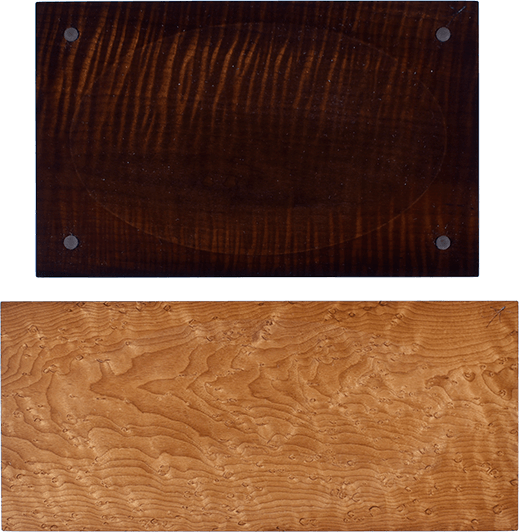About Carbonized Wood
Humans have been improving the performance of wood since we started playing with fire about 1.5 million years ago. The ancient ones used fire to harden their spear points and arrow tips. The technical aspects likely escaped them; but their results were real. The appropriate use of fire can toughen wood by shrinking it, making it more dense. This firing process can also fill the wood's microscopic pores with carbon. This "carbon seal" limits the wood's ability to absorb liquids. The result is tougher wood with limited ability to absorb liquids. The fact that carbon is naturally antibacterial is icing on the cake when embodied in the woods we use for Beautiful Boards.
It is useful to think of dry, non-carbonized wood as a hard sponge, ready to absorb more than its weight in water; and carbonized wood as a hard sponge with limited ability to absorb water. This is why normal wooden doors and woodwork swell, shrink, and misbehave with the seasons; and why Beautiful Boards remain calm and stable throughout a lifetime of washing and drying.
The technical name for our fire treatment of wood is "torrefaction". Torrefaction requires sophisticated control of the process of making charcoal. In treating the wood for Beautiful Boards, we stop the process at the point where adequate carbonization has occurred and the wood has turned a beautiful rich and warm color.
My understanding is that sometime in the mid 1980's a Scandinavian farmer lost a fence line to a grass fire. He dismantled the fence and threw the charred fence post remains into a drainage ditch. Twenty years later, when the new fence posts rotted off, (spruce fence posts rot quickly) he threw the rotted posts in the same ditch. To his surprise, the remains of his original charred fence posts were still intact, despite laying in a wet ditch for 20 odd years. Hmm.... He had a brother at the University.... hmm.... A sophisticated process for intentionally heat treating wood was developed. This is Torrefaction.

Fast forward:
We heat our wood to about 600°F; a temperature higher than the wood's actual combustion temperature. As the wood smokes in the chamber, the oxygen is displaced, preventing the wood from bursting into flame. While some smoke is escaping the wood as smoke, some smoke turns to carbon within and throughout the wood itself. This gives the wood its beautiful colors and reduces its ability to absorb water.
This process really alters wood as a material. It becomes very stable and resistant to absorbing water and other fluids. It is ideal for making thin cutting boards that stay very flat and provide a lifetime of use.
Our ancient ancestors were on to something. Our relationship with wood and fire is so old—very cool.
